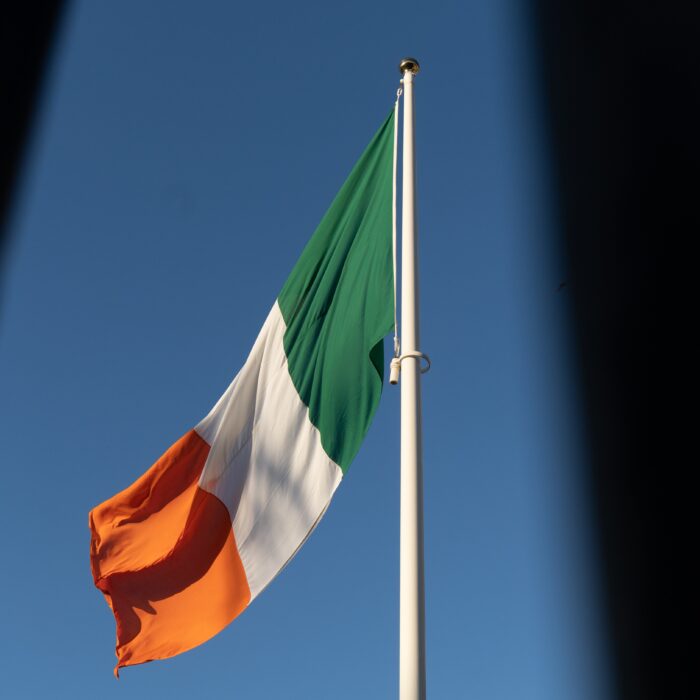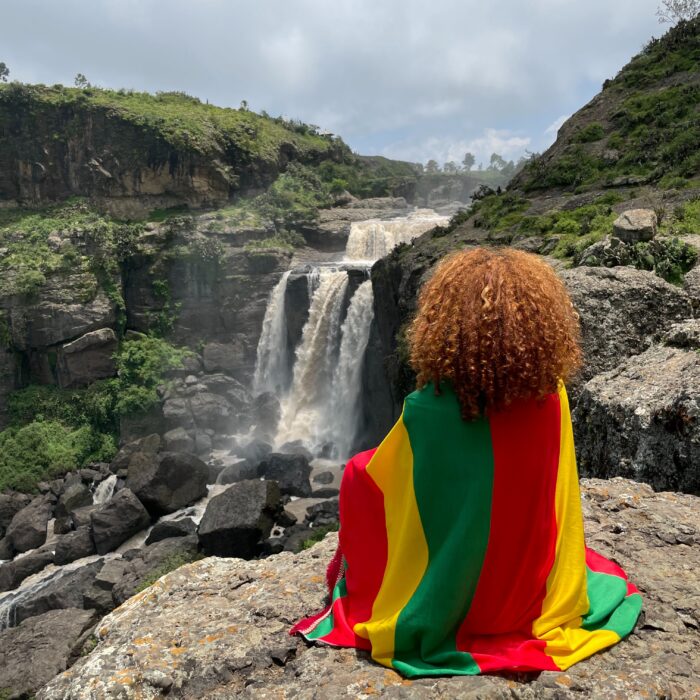You have no items in your cart. Want to get some nice things?
Go shopping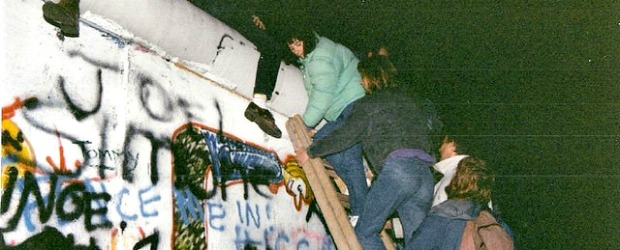
The dress code for the beginning of freedom is as follows: pastel-coloured or leather jackets, pale blue jeans; or basically just whatever you grab when you hear the news. Hammers and chisels are also permitted; champagne might be recommended. You will also require: a strong tolerance of euphoric crowds; a discarding of stiff social formality, but not of human warmth; an immense capacity to grasp all at once how freedom has been handed to an entire nation, how the tense opposition of ideologies across the northern hemisphere is now beginning to collapse, and how the future has broken open and your world changed forever.
It’s easy, now, on visits to Berlin, to overlook the reality of the Wall. Anyone can go to Potsdamer Platz, where a single line in the paving stones marks its former route. In this place, which was once a wasteland between East and West Berlin, you can with the tiniest of jumps hop west, hop east. West. Back again. In this district of commerce and entertainment, with its tourist crowds and traffic and brand new high rises, it’s impossible to really imagine the fatal zone this once was, where that simple step across a such a short space was out of the question —forbidden to East Germans, blocked by rows of reinforced concrete, armed guards, and coils of barbed wire, and almost certain to end in death.
On 9th November, 1989, all of that changed. In spite of the increasing peaceful protests and demonstrations that had taken place in the months beforehand, no one expected it on that particular night. “I was out dancing at a disco in Neukölln,”recalls a friend who lived in West Berlin, “and as we came out, we wondered why the public transport was still running. A lot of people were still out on the streets in Berlin, so we guessed that the Wall had come down. I lived right by the Wall in Wedding, so I went to the border crossing in Chausseestrasse. There was a great atmosphere there. Everyone was hugging one other. Our greengrocer was handing out bananas [something of a rarity in East Germany] and other fruit. It went on for days.”
“This is history in the making,”said my mum, as we watched it on BBC news in our living room in suburban Newcastle. It had been a division that was part of everyone’s lives, east or west. The Wall was not only a physical reality, but an emblem of two opposing systems in the world staring at each other. Us and Them. Capitalism and Communism. Our respective systems pointed nuclear weapons at each other. A generation had grown up with it. For me, as for my parents, the name “Berlin”had always stood for a bleak and divided city, a divided country, a focal point of all the seriousness in the world. The Berlin Wall was an emblem, too, of oppression. What did we know about the people behind that wall? They lived very different lives from ours: state-controlled, under surveillance by secret police. They had no freedom of speech; they couldn’t travel to the West. I knew I would never get to meet them.
In archive footage of the fall of the Berlin Wall, it looks like nothing: twelve feet or so of concrete, topped by the convex curve of a pipe to deter anyone trying to shin up. That’s how it seemed to me, on that evening, in the television reports. People were standing on top of it. What you don’t see in that footage is what’s behind it —the barbed wire, the anti tank obstacles, the cleared expanse of the Death Strip with its watch towers and floodlights, a place where there was nowhere to hide. Over the twenty eight years of its existence, the Wall had claimed well over a hundred lives —would-be escapees shot and left to bleed to death, or tangled in barbed wire, or killed in some fatal mishap while trying to cross over into West Berlin by more ingenious means. Nevertheless, knowing the risks and judging them better than staying, people had kept trying. Now they could walk across into West Berlin, while the guards stood passive. Many were curious to see it for the first time. A few were able to meet up with family they had been divided from for a lifetime, though only ever a few miles apart.
Only a couple of days later, people were chiselling away at the Wall, chipping off pieces as mementoes of this moment. History, already.
In the summer of 2004, I travelled down to Thuringia, one of the neue Länder, the new federal states, of Germany. A friend in Berlin had invited me to visit her home village there for a weekend. In this place near the Harz mountains, with its rich and gorgeous landscape, I heard a familiar story from her family and their neighbours: that young people had been moving away, that there were no jobs to be found, and that the outlook was not hopeful. In the midst of this idyllic countryside, the nearby town’s most obvious new building was a large Arbeitsamt, a state job centre. My friend herself had moved to Berlin to find work, and despite a lack of real success in Berlin she didn’t want to move back.
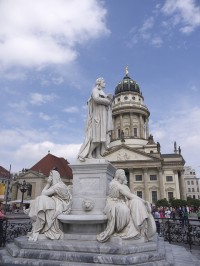
This was a story I heard again and again in those years, a constant theme, it appeared, of post-reunification Germany. The Berlin Wall offers itself as such a neat symbol of imprisoning control that it’s tempting to see its physical demise as the end of the story. Even the word “fall”suggests the Wall vanished overnight, whereas the reality is of course simply that borders which had been closed and guarded for decades were suddenly declared open, allowing East Berliners into the western half of their city and declaring the restrictions on movement over, signalling a sea change in government policy and pointing to what was to come. Symbolically, it signified the end of state control over its citizens, and more broadly, a key moment in a gradual end to the Eastern Bloc, and (to the relief of half the northern hemisphere) an easing of the standoff of the Cold War. The reunification of Germany would follow less than a year later. In the joy and celebration that accompanied all of this, it was tempting to confuse the symbol with reality, especially at a distance in England, to imagine that everything was solved: Congratulations, East Germany —now, like us, you can enjoy democracy and freedom (and unlimited access to consumer durables!) —that was the main thing, wasn’t it?
Yet it was more a question of merging two different countries. For decades these had been separate nations with very different ideological backgrounds and experiences. Dr Kaethe Wenzel, artist, moved to Berlin from western Germany a few years after reunification. She recalls, “I never suspected that —speaking the same language —I would run into such communication problems. But I soon found out that we didn’t mean the same things by the same words. For example, I had to find out that ‘I believe’was East German for ‘I know for sure but find it arrogant to say so.’”The process of absorbing the legacies of two systems into one country was clearly not an overnight task. Yet for a while, in the nineties, east-west encounters in Berlin offered open-minded Westerners a chance to see their own system with different eyes. Wenzel remembers “a very special atmosphere, flats and people and conversations where outside luxuries and things seemed to matter so much less than anywhere in the West.”
However, the new Germany was largely for former East Germans to adapt to, and there was some cultural distance to navigate. While many from the former East managed the transition easily, some did get lost along the way, unable to survive in a new, more individualistic system. The throwaway materialism of western culture was unfamiliar and not always appealing to East Germans, who had learned instead to maintain and repair their possessions. There was economic distance to cover, as well. Infrastructure required investment. Previously state-owned companies had to learn to survive in a competitive environment. Unemployment in some areas rose considerably, and a large number of people moved away, often to the western side of Germany, looking for work. As in my friend’s village in Thuringia, people wondered how things might work out. This was a longer-term project not encapsulated in the suddenness of “fall”.
And yet, change on this scale comes slowly, but it does arrive. In spite of the differences that linger, things are looking up now in those new federal states that were struggling economically. Berlin has transformed. It’s a city that is accessible, inspiring, a teeming arts and culture scene. It’s now long-established as the capital city of a united Germany. In spite of rapid traction gained by property investors, its citizens voice a healthy critical reflection on commercial changes. It’s a version of itself that could never have been imagined by anyone there a quarter of a century ago. A couple of months back, I talked with an old friend who comes from the former East Germany. We talked about the changes of the last twenty five years. I wanted to know if he ever talks about his life in the GDR with his children. “They do ask us, sometimes,’he said, “and we tell them a bit about it. But for them it’s not a question of East or West. There’s only Germany.”For these kids, the future is wide open in a way that their parents at that age could never have imagined. The future is free.
Acknowledgements: several people took time to offer memories, insights, and views on the fall of the Wall. A million thanks (you know who you are!) It was absolutely invaluable.
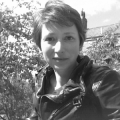
About E.E. Mason
After spending seven years in Berlin, E. E. Mason moved to Vancouver to pursue an MFA in Creative Writing. She now lives in London. Her work has appeared in Malahat Review.

